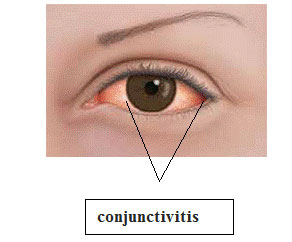
What is conjunctivitis?
Conjunctivitis is the term used to describe inflammation of the conjunctiva - the thin, filmy membrane that covers the inside of your eyelids and the white part of your eye (sclera). Conjunctivitis is most commonly referred to as pink eye.
The conjunctiva, which contains tiny blood vessels, produces mucus to coat and lubricate the surface of your eye. When the conjunctiva becomes irritated or inflamed, the blood vessels conjunctivitis become larger and more prominent, making your eye appear red. Conjunctivitis may occur in one or both eyes.
What are the symptoms of conjunctivitis?
Symptoms of conjunctivitis include:
- Increased tearing;
- Soreness of the eye;
- Foreign body sensation;
- Itchiness of the eye;
- Hazy or blurred vision due to mucus or pus;
- Excess mucus (pus);
- Crusting of eyelashes in the morning.
What causes conjunctivitis?
Many different sources of eye irritation can cause conjunctivitis. The most common are:
- Infections (viral and bacterial);
- Allergies;
- Environmental irritants.
Viral infection is the most common cause of conjunctivitis. This same virus produces the familiar red and watery eyes, sore throat and runny nose of a common cold. Symptoms of conjunctivitis can last from one to two weeks and then will disappear on their own.
Discomfort, however, can be alleviated with warm compresses applied to the eyes. Prescription eyedrops may be prescribed by your ophthalmologist (Eye M.D.) to hell minimize drainage or discomfort.

